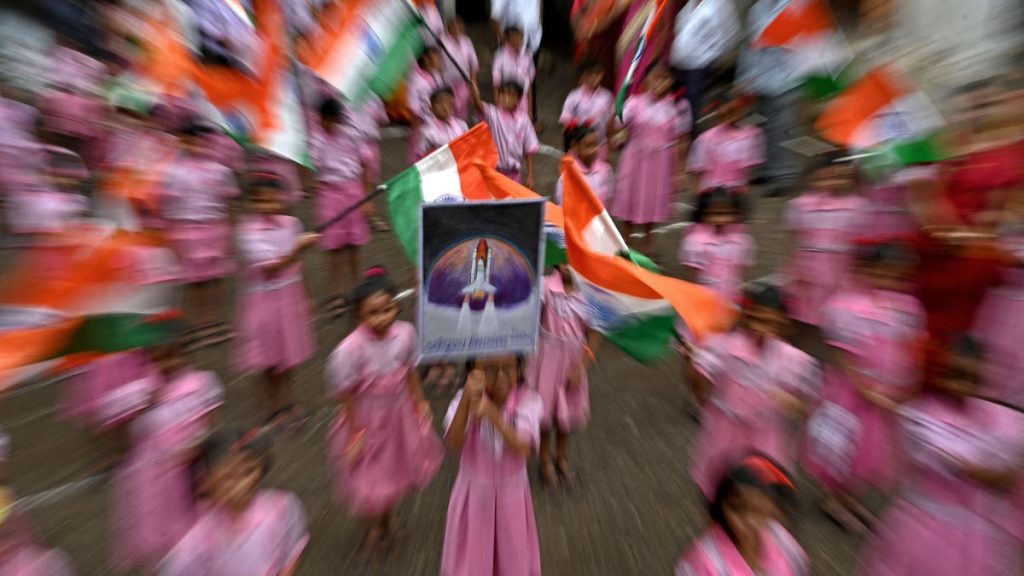India has joined the U.S., China and the former USSR in successfully soft-landing a spacecraft on the surface of the moon. The uncrewed Chandrayaan-3 mission has also become the first to land close to the moon’s south pole.
About 15 minutes after initiating its Automatic Landing Sequence (ALS), Chandrayaan-3’s Lander Module (LM) touched down around 8:34 a.m. EDT. Images were streamed live on YouTube from the Indian Space Research Agency (ISRO) control room in Bengaluru, India.
Chandrayaan-3 means “Mooncraft” in Sanskrit.
It comes a few days after Russia’s first mission to the moon since 1976 crashed into the lunar surface and was destroyed.
What Chandrayaan-3 Will Do On The Moon
Chandrayaan-3’s moon lander, Vikram will now attempt measure the mineral composition of the lunar surface. The south pole of the moon is thought to be richer in minerals than other regions. It’s expected to operate for two weeks.
India’s third lunar mission, Chandrayaan-3 was launched on July 14, 2023 from Satish Dhawan Space Center in the state of Andhra Pradesh, India.
India’s Chandrayaan Missions
It’s a follow-on mission to Chandrayaan-2, India’s first attempt to land on the moon, which ended in failure on September 6, 2019 when contact was lost with the spacecraft when it was 2.1km above the lunar surface.
That was a follow-on from the original Chandrayaan mission, which orbited the moon in 2009 carrying NASA’s Moon Mineralogy Mapper (M3), an imaging spectrometer that provided the first high-resolution spectral and spatial maps of the Moon’s surface.
Its data was pivotal in NASA’s Jet Propulsion Laboratory confirming the first definitive evidence of water on the surface of the moon in 2019.
Why Chandrayaan-3 Landed At The Moon’s South Pole
Since then there’s been a rush to plan missions to explore more about the moon’s south pole, which has craters both permanently in sunlight and permanently in darkness. That makes it possible to have both constant solar power and a life-giving water, which can be used for drinking, but also to produce both oxygen and even rocket fuel. The south pole region is therefore being eyed-up as a potential site of future moon bases.
NASA’s Artemis-3 mission, scheduled for the mid-2020s, will land one female and one male astronaut on the surface of the moon in the south pole region.
Wishing you clear skies and wide eyes.
Read the full article here










